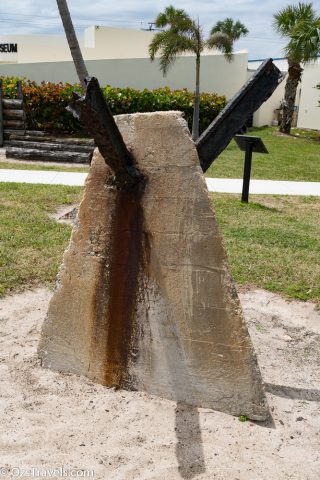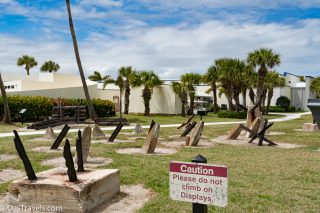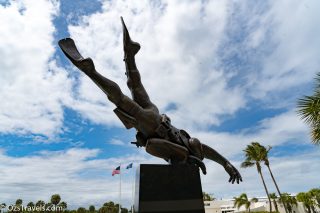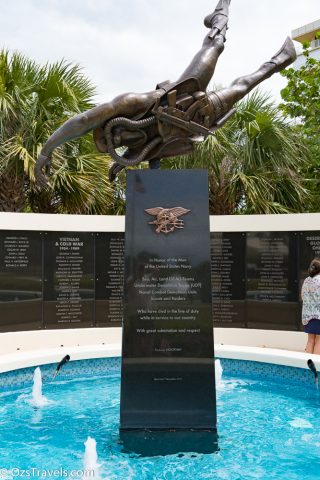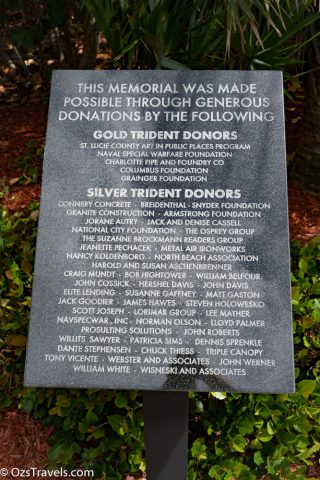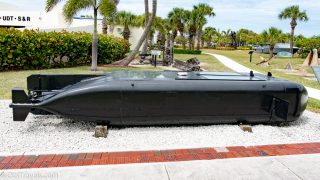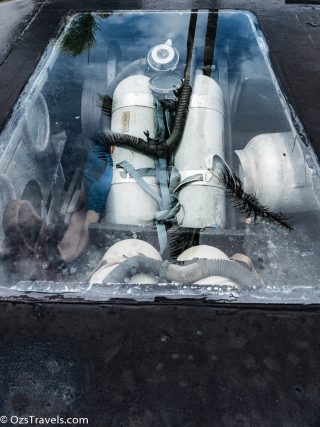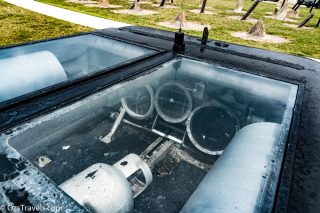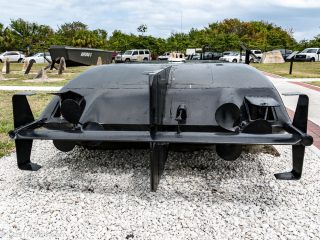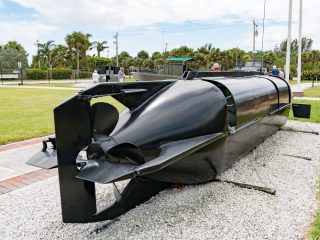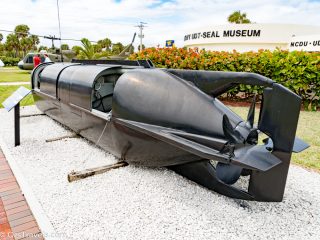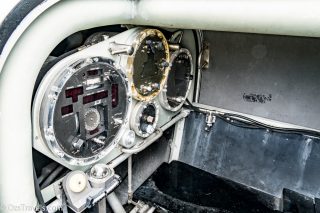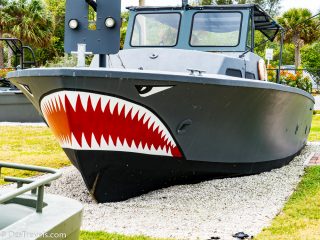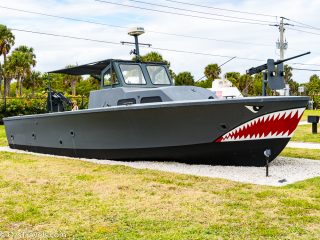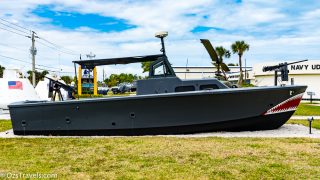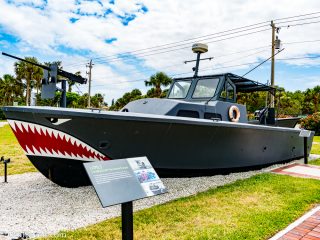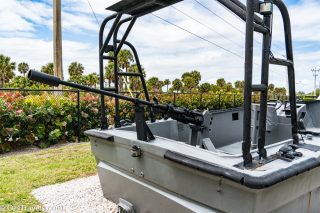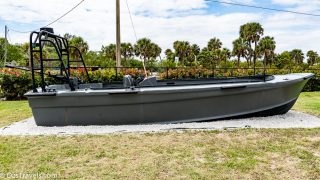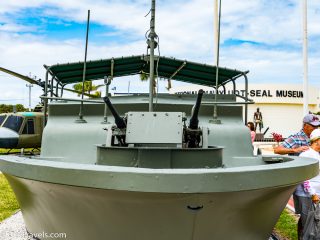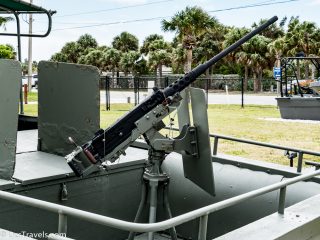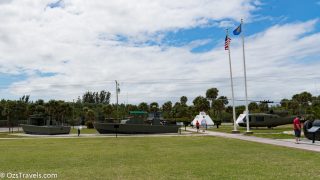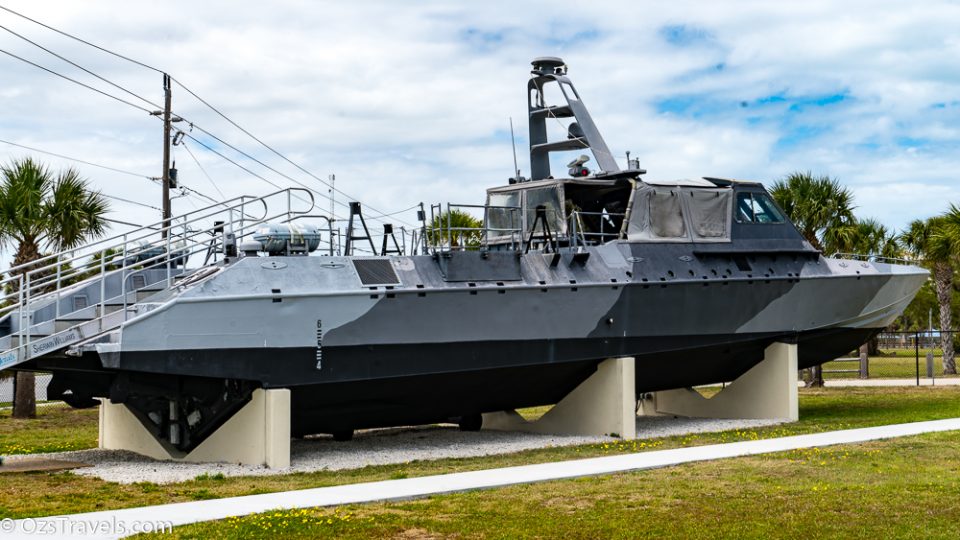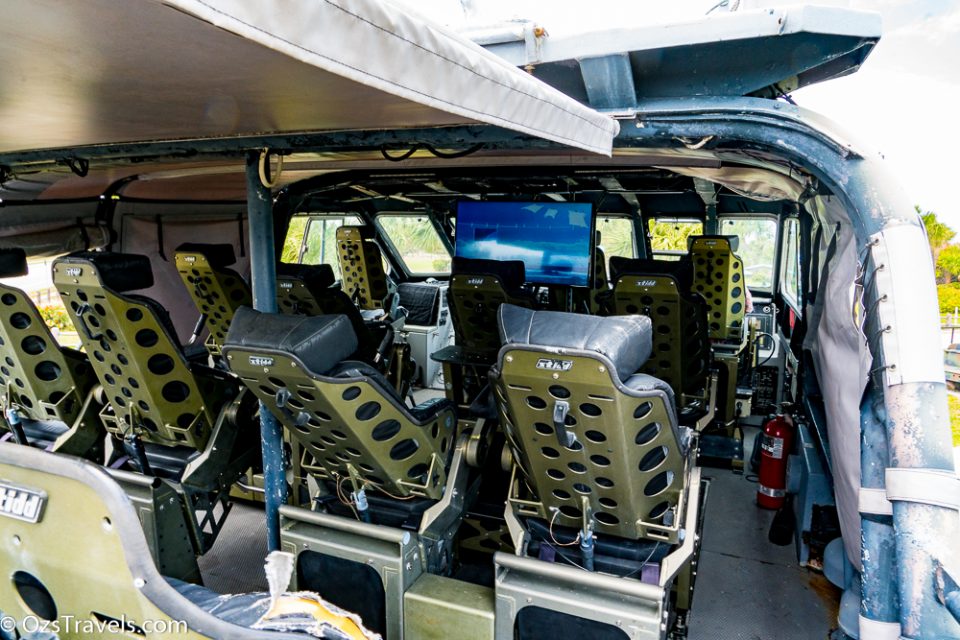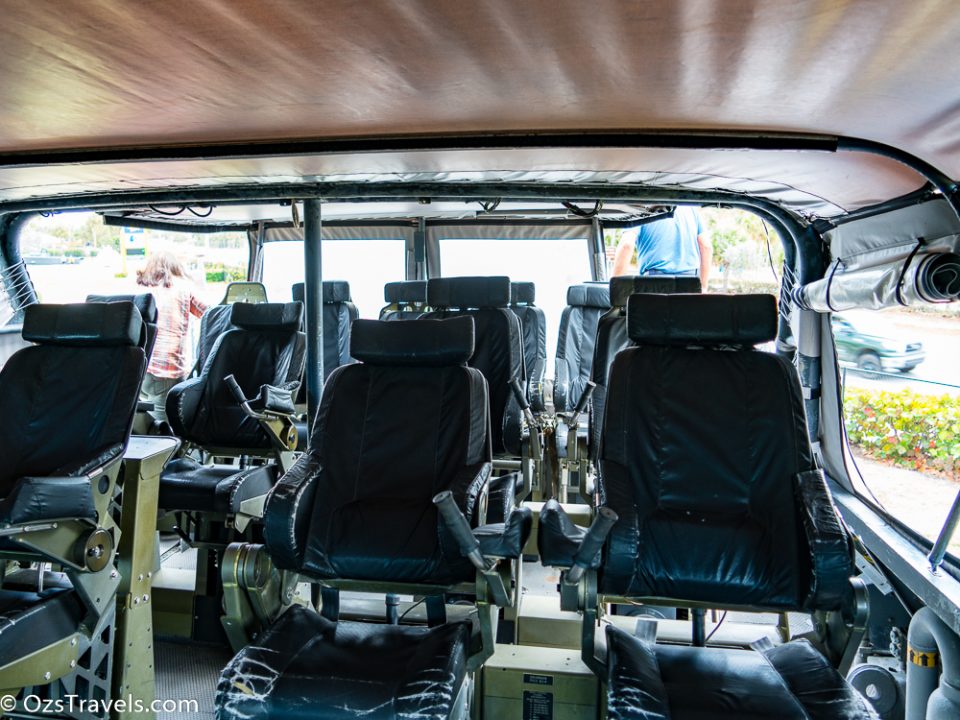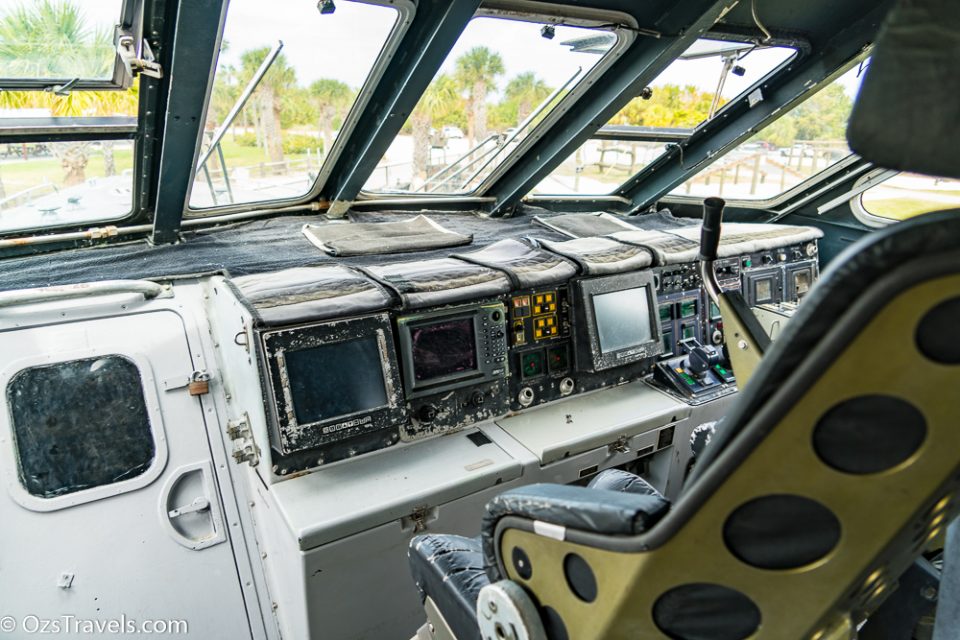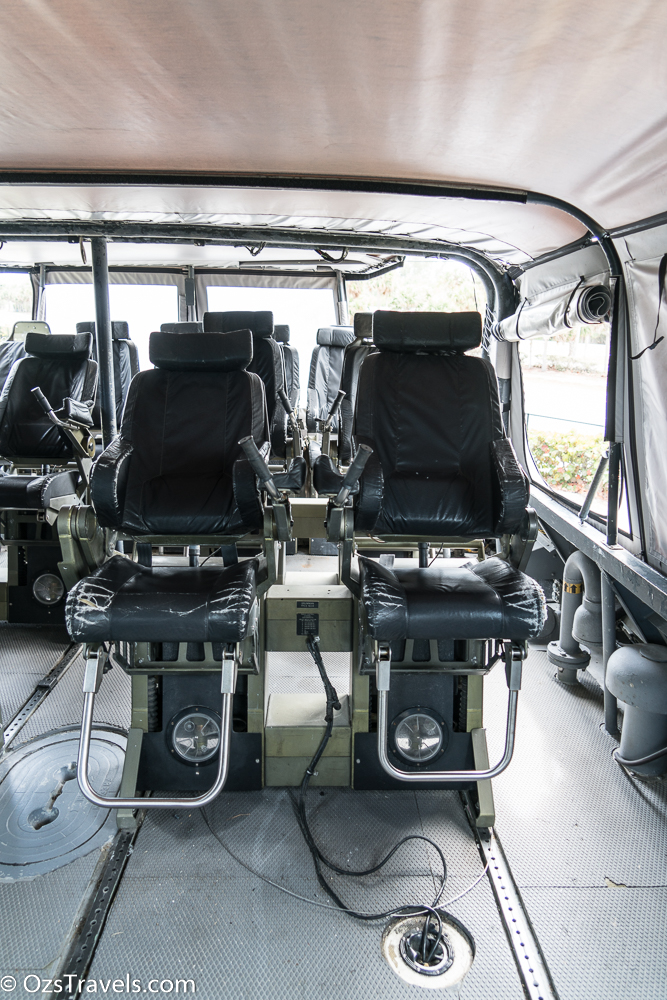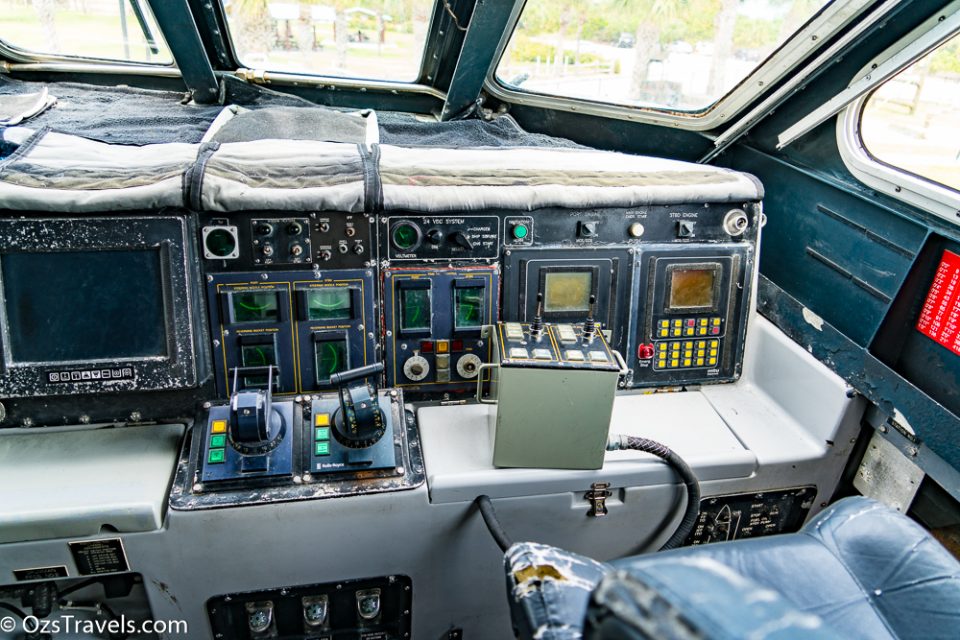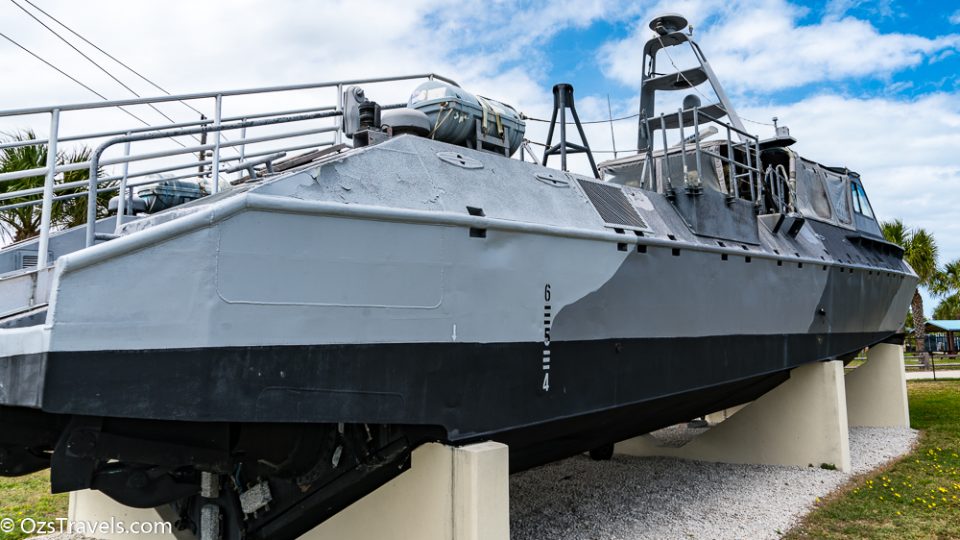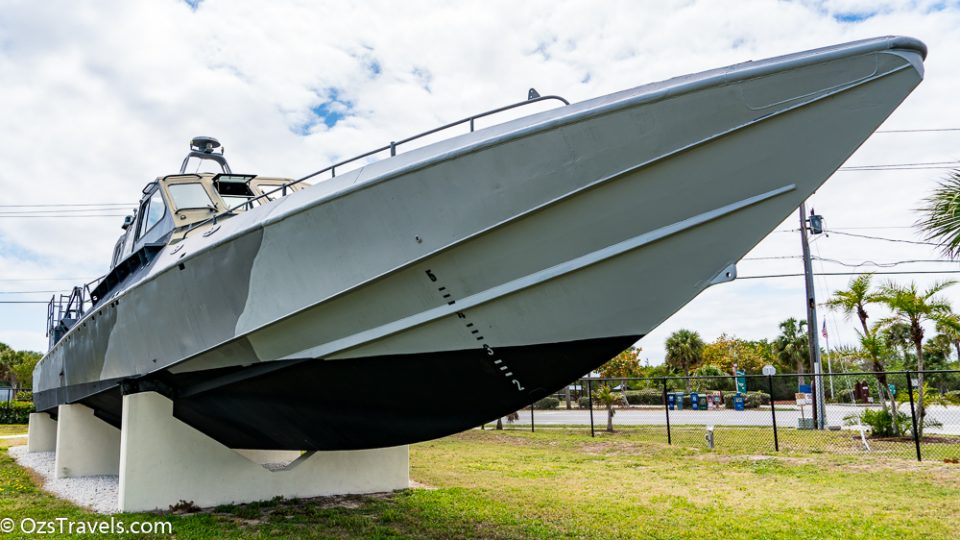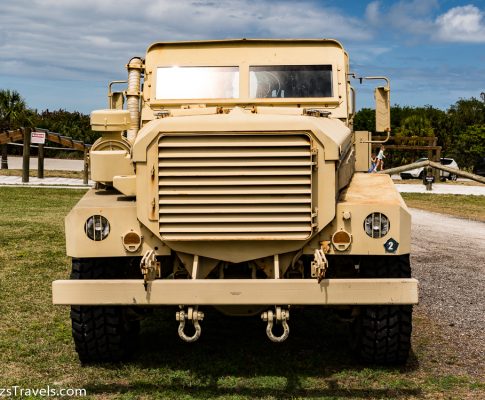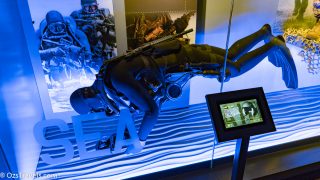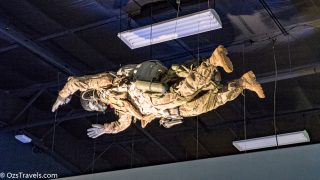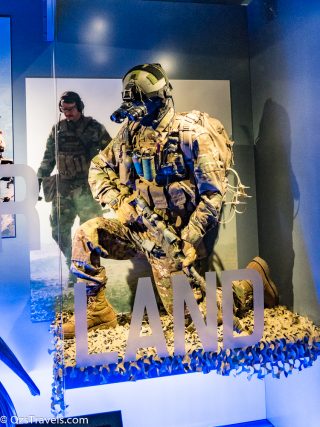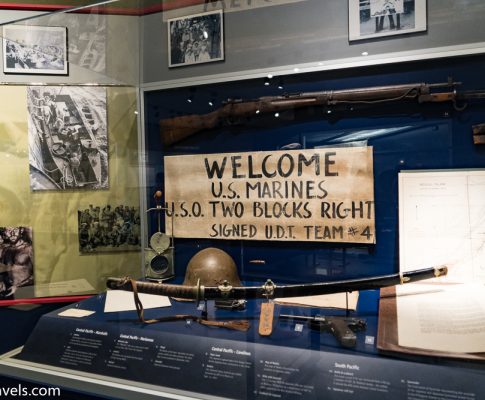Whilst in Florida my friends decided that they would take me to The National Navy UDT-SEAL Museum at Fort Pierce. I had no idea that this place existed, guess I should have done more research about the area. The UDT-SEAL Museum is definitely a good place to visit if you have an interest in Military History.
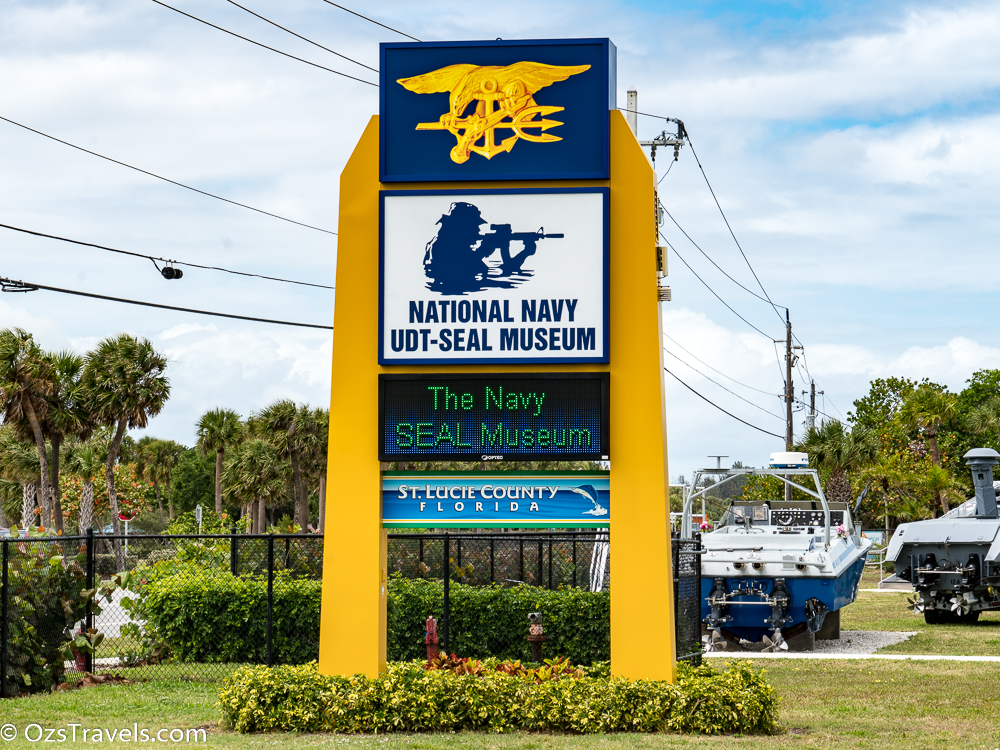
UDT-SEAL Museum
The Museum was dedicated in 1985 and was designated by an act of the US Congress as the Official National Museum of the U.S. Navy SEALs and their predecessors, the Underwater Demolition Teams, in 2007. Even though the Museum is designated by Congress it receives no Federal funding it is reliant on private donations.
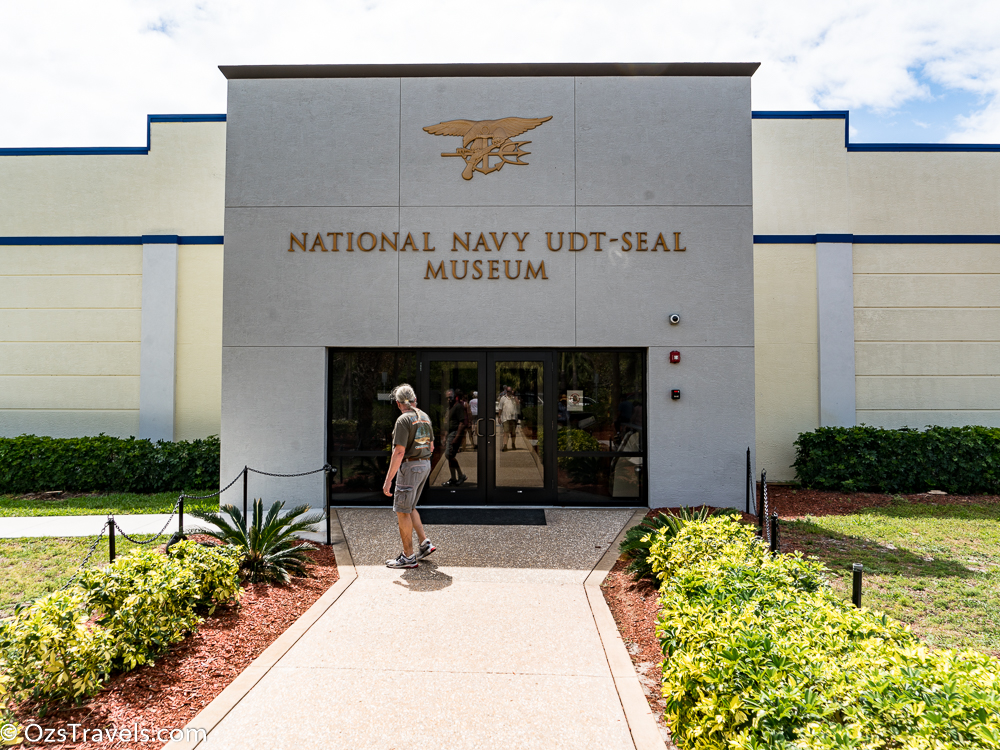
The location of the UDT-SEAL Museum is considered the birth place of the UDT’s. In 1943 the US Navy took over parts of the Florida Barrier Islands to establish the US Naval Amphibious Training Base at Fort Pierce. The base was used to train US Navy crews on how to operate the various types of amphibious landing craft, US Navy personnel who managed amphibious assaults, Navy Scouts / Raiders and the Naval Combat Demolition Units (NCDUs), the fore-bearers of the UDT.
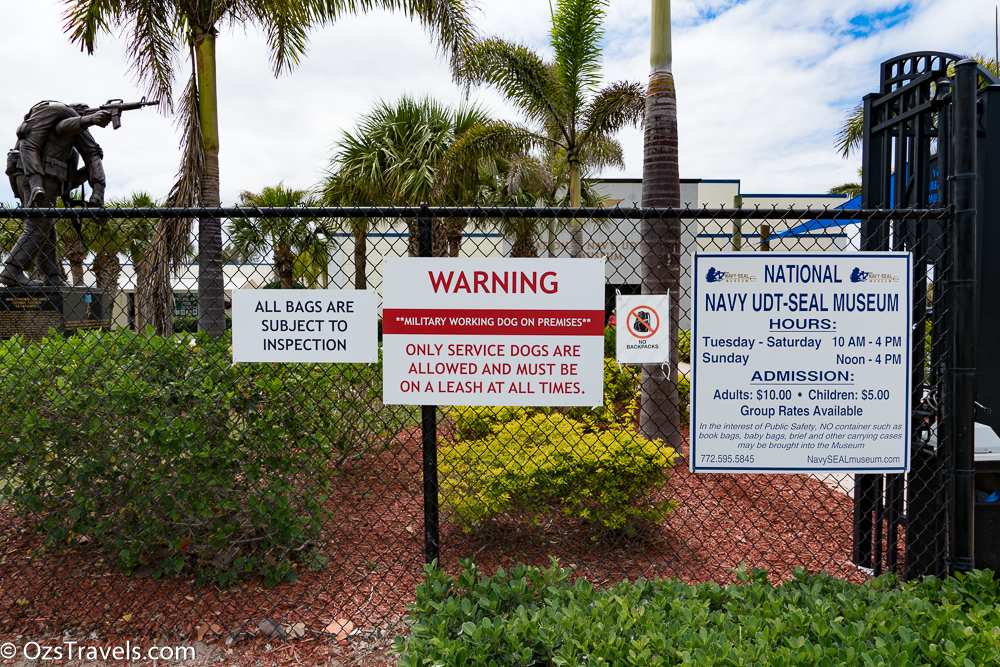
Between 1943 and 1946, when the base was closed, around 140,000 men, about 3,500 were NCDUs, had been trained in Fort Pierce on how to clear underwater concrete and steel beach obstacles. The obstacles were built by the Seabees. After 1946 the population around the base grew unbeknownst of the importance of the area to World War II operations.
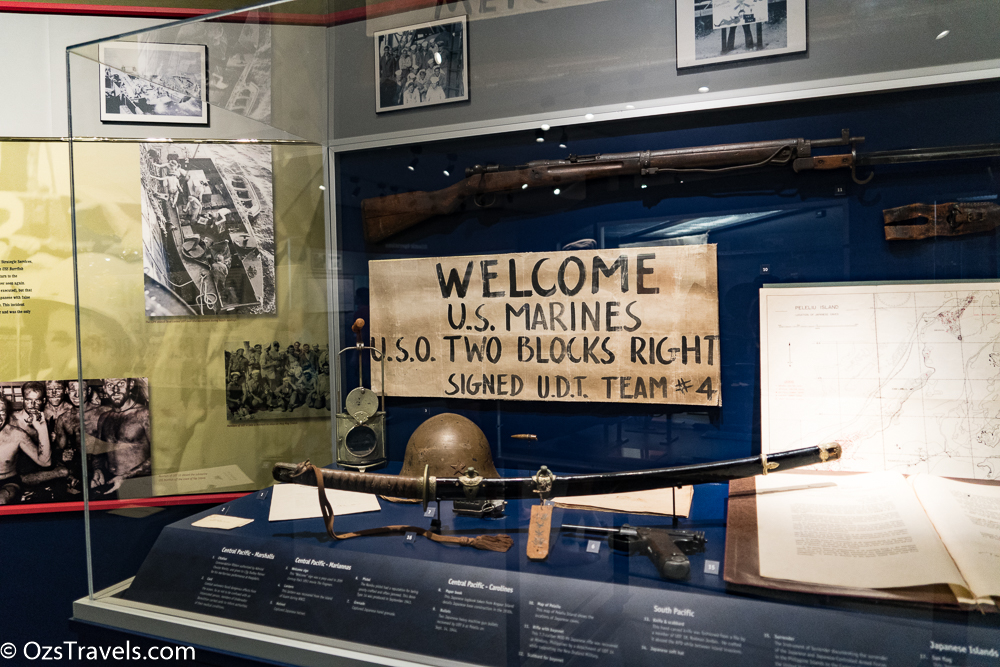
In 1981 a UDT reunion was held at Fort Pierce where the idea of turning the old base into a museum was first tabled. The UDT-SEAL Museum ground-breaking ceremony was held on Veteran’s Day in 1984 with dedication ceremony occurring 1 year later on Veteran’s Day 1985.
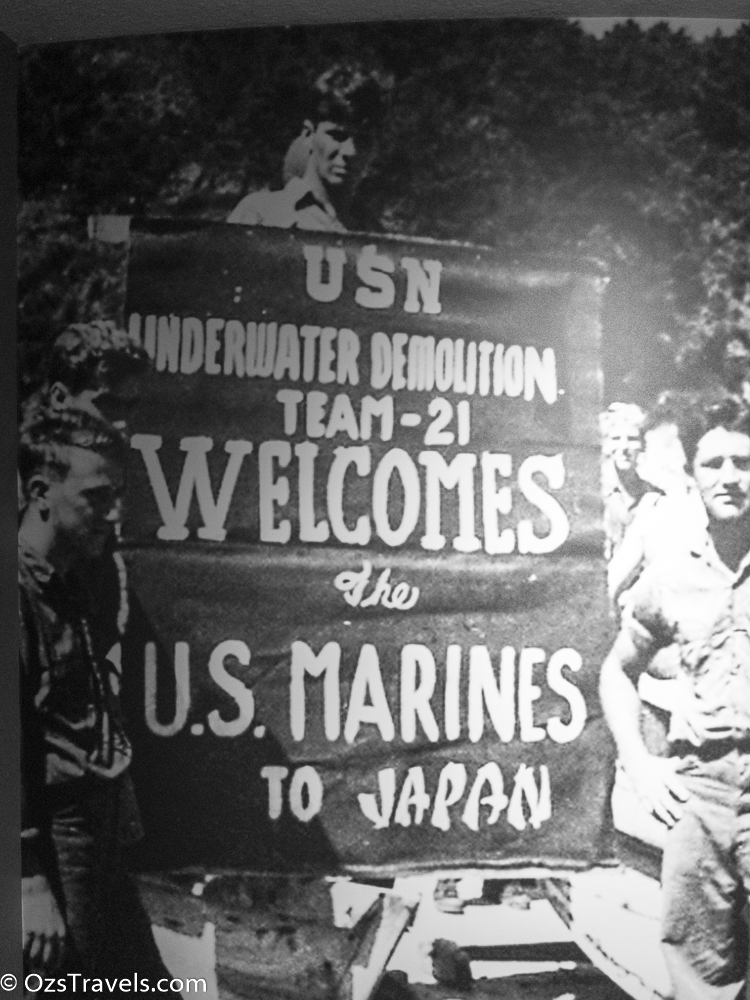
Medal of Honor Statue
Benefactor, Mr Ross Perot
Although the statue reconstructs the actions of Medal of Honor recipient, Michael Thorton, carrying the wounded Medal of Honor recipient, Tom Norris, off the battlefield, the statue encompasses the ultimate importance of a “swim buddy” and these words are indelibly carved on the base of the statue. Swim Buddy is a deeply rooted Seal term which means each being responsible for the other’s safety. Reminds me of the Submariner term of “Buddy in Boats” which has a very similar, if not the same, meaning to us!
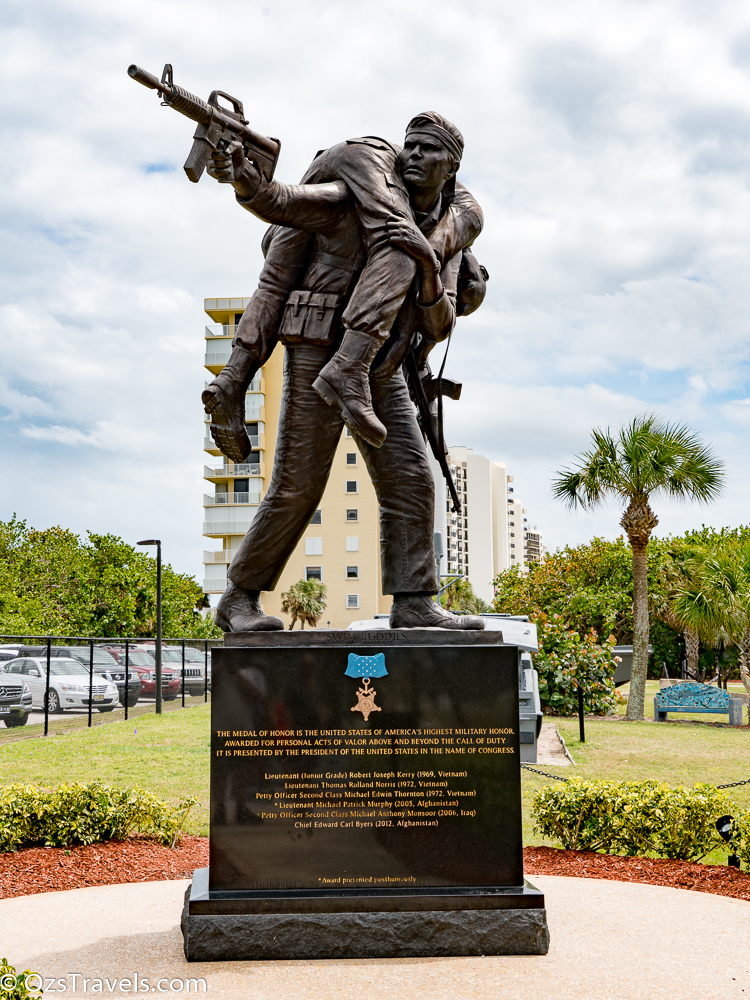
SEAFOX
Special Warfare Craft, Light
The SEAFOX became a standard short range insertion craft for the Special Boat Units in 1982 and subsequently replaced the LCP(L). Designed to support a Seal element with low profile, high speed, and large payload capacity, it was the first boat specifically designed to support SEAL Team operations. It was designed to deploy the swimmers with their equipment out the stern.
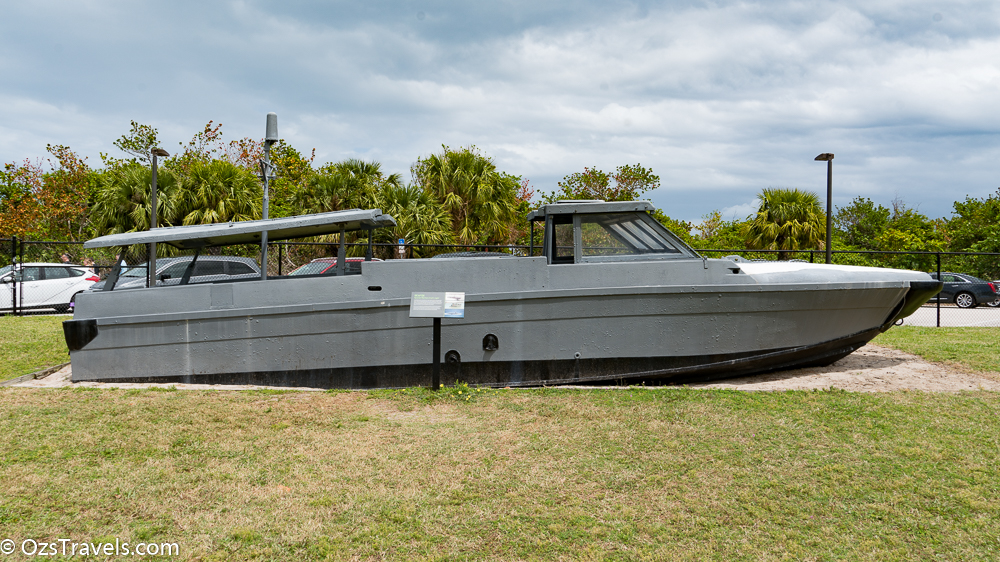
The stern ram dropped down and became a platform for high-speed deployment. The swimmers would literally run of the back of the boat in an attempt to counteract some of the craft’s forward momentum and reduce their impact with the water. The crafts were decommissioned in the early 1990’s.
LCP(R)
Landing Craft, Personnel (Ramped)
Displacement: 13,500 lbs (light) Length: 35’-10” Beam: 10’-9”
Armament: two .30-caliber machine guns
Complement: 3 crew, 36 personnel or 8,100 lbs of cargo
Number Built: 2,631 between 1943-1945
This craft, with a rubber boat lashed along side, was the boat most commonly used by World War II Underwater Demolition Teams (UDT) for their cast and recovery operations.
Years of searching for an original World War II plywood boat did not result in the procurement of one of the vessels. However, due to the generous contributions of more than ninety members of the following World War II Underwater Demolition Teams, this replica was constructed and donated to the UDT-Seal Museum:
UDT 15 UDT 8 UDT 19 UDT 17 UDT 3 UDT 5
UDT 18 UST 24 UDT 14 UDT 10 UDT 22 UDT 29
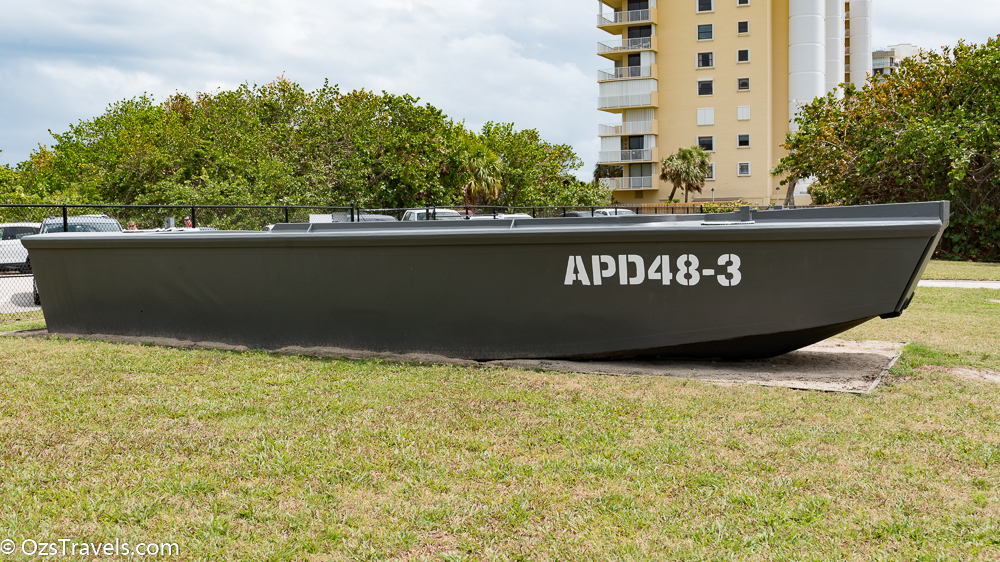
Beach Obstacles
From the Past
These obstacles were used for training by Frogmen during World War II. They were placed here on the beaches of Fort Pierce between 1943 and 1945 and were removed in February 1991. Four Types of obstacles were found on Normandy beaches on June 6, 1944 – D-Day.


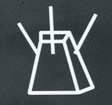

Memorial Wall
This memorial is dedicated to the U.S. Navy SEALs and their predecessors who have sacrificed their lives for our country. The granite walls list the names of the men who were killed in combat or training for combat beginning with World War II to the present day.

“… I heard the voice of the Lord saying, “Whom shall I send and who will go for us?” Then I said, “Here am I. Send me.” (Isaiah 6-8)
Mark IX
Swimmer Delivery Vehicle (SDV)
Designed primarily for hydro-graphic reconnaissance and weapons delivery in the early 1970’s, this two-man SDV was propelled by an electric motor with power supplied by rechargeable batteries. It had manual steering and diving controls. A computerized navigation system, and a docking system were used in guiding the craft and in rendezvousing with the parent submarine. This model was designed to carry and launch torpedoes at a distant target. Speed was several knots when submerged. Weight is approximately 5,000 pounds.
MK 8 Mod 0
SEAL Delivery Vehicle (SDV)
The Mk 8 Mod 0 SDV began replacing the Mk 7 SDV’s in the early 1980s, and still remains in service today. The SDV is a “wet submersible,” and unlike a classic dry mini submarine, the boat fills with water and submerges. SEALs breathe from individually worn underwater breathing apparatus. An alternate source of air is provided to the operators via an air subsystem on board the vehicle. The SDV has sophisticated electronics, ballast, communications, and obstacle avoidance systems and is driven by a DC electric motor powered by silver zinc batteries. It is literally “flown” like an airplane underwater with the SEALs relying solely on the vehicle’s instruments for navigation.
Information on the number of personnel it can carry, its operation depths, speed and distance is classified. The SDV can be deployed from and recovered by a surface ship, submarine, pier side, or ramp to meet specific mission or training requirements. The SDV is designed to clandestinely transport combat swimmers to and from the target area as the conduct maritime reconnaissance or direct action operations.
In addition to its classified missions, the SDV was employed by Naval Special Warfare during OPERATION Desert Storm (1991) when SEALs were tasked with clearing area waterways of underwater mines. The SDV was also employed at the start of OPERATION Iraqi Freedom (2003) when SEALs successfully secured Iraq’s off-shore gas and oil terminals, averting the catastrophic ecological and financial devastation experienced during Desert Storm when Saddam Hussein directed the flooding of the Persian Gulf with oil and sabotage of the wellheads in Kuwait.
PBR
Patrol Boat River
From 1966 – 1971, the PBR was one of the primary boats that supported SEALs in Vietnam. The typically operated in pairs as shown here. They would be heavily armed with single and twin .50 caliber machine guns, 40mm grenade launchers and M-60 machine guns. The would provide SEALs with the capability to operate in the shallow rivers and canals of Vietnam providing and insertion and extraction platform as well as direct fire support if needed. The SEALs and PBRs formed a deadly combination that took the fight into the enemy’s own backyard enabling SEALs to conduct direct action and other missions in areas that “Charlie” thought safe and impervious to American interdiction.
The hull was reinforced fiberglass with 2 x 180 hp (115 kW) Detriot Diesel 6V53N engines, each driving a Jacuzzi Brothers 14YJ water pump-jet for propulsion and thrust buckets for reverse thrust. It could operate in water depths as little as nine inches. Ceramic and metal plates offered some protection to the crew. Speed was 28.5 knots (53 km/h 32 mph).
Iranian Gunboat
Operation Earnest Will
This Iranian gunboat, Swedish made and armed with Russian weapons, is one of two boats recovered by SEALs during Operation Earnest Will in the Persian Gulf (1987 – 1988).One boat was recovered adrift following a brief surface engagement. This boat was sunk in and air-to-surface engagement, then recovered from a depth of over 100 feet by the SEALs. After being used for training by Special Boat Squadron One, Coronado, California, the boat was sent here for display.
LCP(L)
Landing Craft Personnel (Large)
This craft was built after World War II to replace the LCP® as the main “cast and recovery” boat. The Frogmen went over the side into a rubber boat and then into the water. They were picked up again in much the same way. Although this board is much larger than an LCP(R), it was much faster because of its V-shape bow. In 1983, the LCP(L) was replaced the SEAFOX.
Iroquois
UH-1B Helicopter
From 1966-1972, the UH-1B “Iroquois”, also called the “Huey”, was flown by Navy personnel from Helicopter Attack (Light) Squadron Three – HA(L)-3 during the war in Vietnam. Nicknamed the “Seawolves”, the provided the SEALs with rapid insertion and extraction as well as fire support. Stationed in the Mekong delta, these heavily armed gun ships and their four-man crews were always on call for the SEALs.
Fitted with four M60C flex-mounted machine guns and two M158 rocket pods, along with other hand held weapons, they could, and did, respond almost instantly day and night.
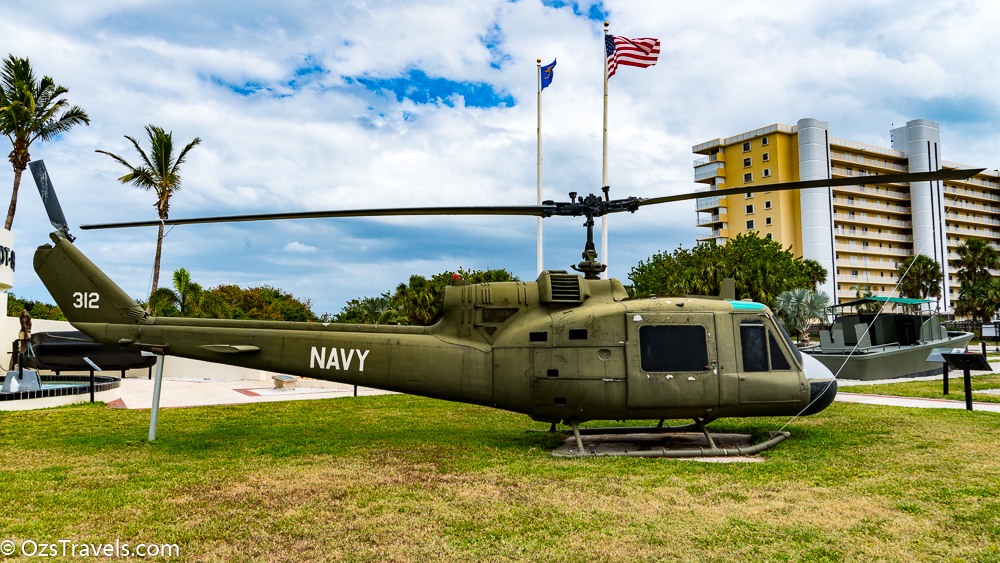
Apollo
Space Capsule
This module was a training device used by UDT recovery teams during the Apollo space missions to prepare for the actual splashdowns. As it hit the water, the Frogmen connected a flotation collar around the capsule to prevent it from sinking. Then they opened the hatch and ensured the astronauts were loaded safely on board the hovering helicopter. UDTs played a vital role in Mercury (1961-1963), Gemini (1965-1966), Apollo (1968-1972) space missions.
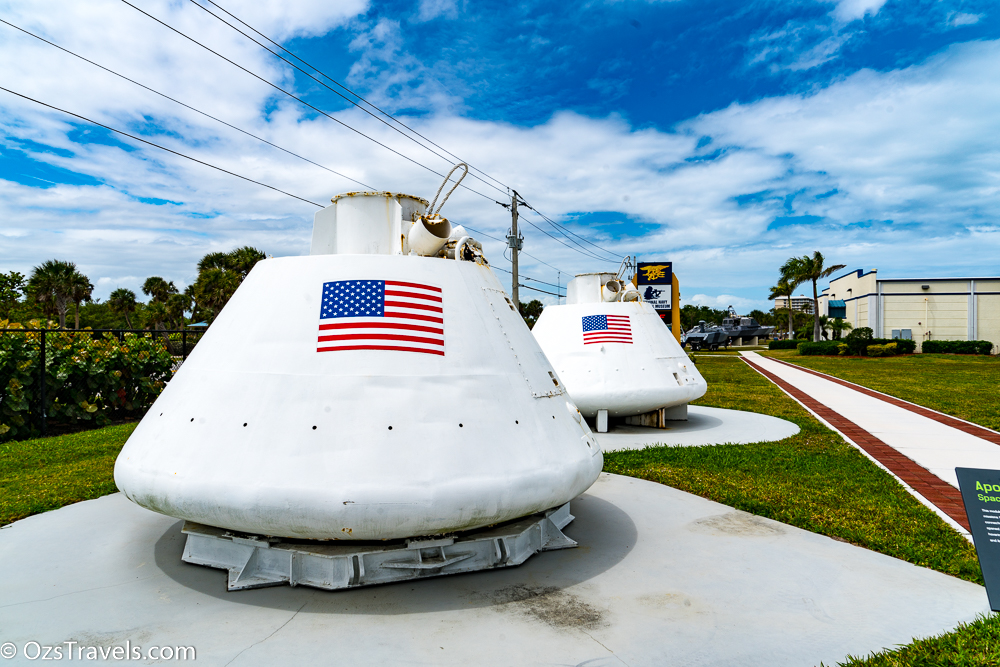
SOC-6
Special Operations Craft-6
This boat is often referred to as a HSAC (High Speed Assault Craft). It was built by United Stated Marine, Unc. (USMI) and delivered to Naval Special Warfare in 1990 as the 6th of the 42 Foot Special Operations Craft being used at that time. It was extremely powerful and capable of making 55 knots and typically cruised at speeds over 40 knots fully loaded. The craft was manned by a crew of three and capable of carrying 12 passengers. It had two racing outdrives and was powered by two 550 horsepower gasoline engines designed specifically for this craft. This boat was capable of operating effectively in extremely adverse sea conditions in support of NSW missions.
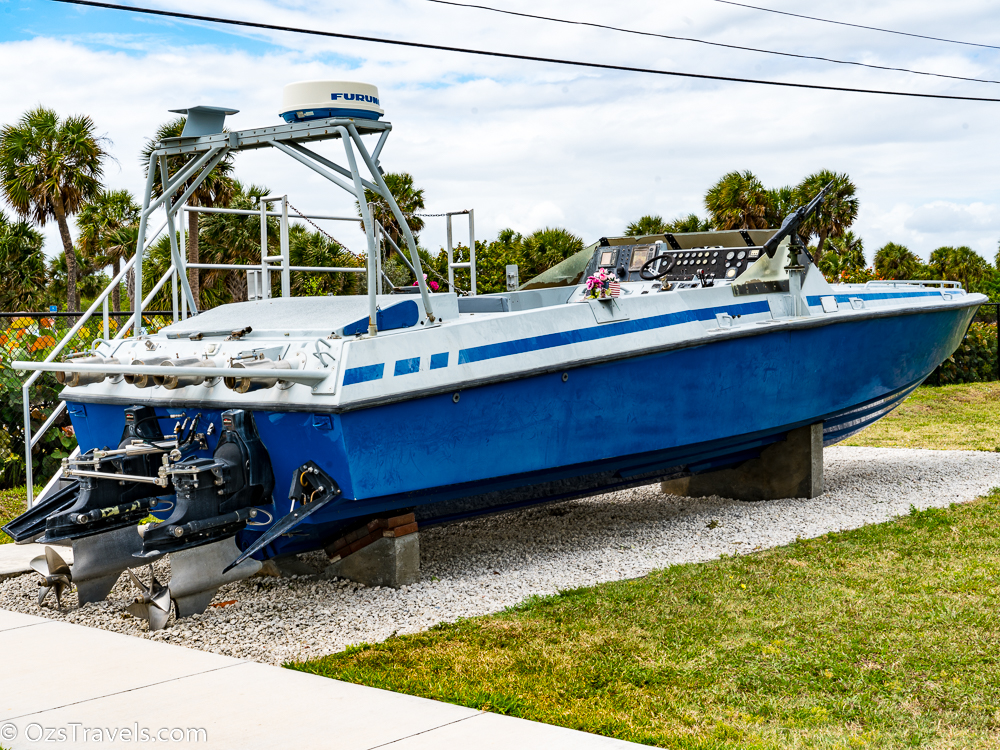
This specific boat is a veteran of Operation Desert Storm. For over a month SOC-6 was used to conduct missions into Kuwait from a forward operation base in Saudi Arabia. On February 25, 1991, elements of the Naval Special Warfare Group One used a SOC-6 and three other Special Operations Craft to carry out an amphibious deception operation off the coast of Kuwait. The four-boat element assigned to Special Boat Unit 12 came within 20 yards of the beach under the cover of darkness to conduct a direct action raid against and Iraqi base on the coast of Kuwait. This was part of a coordinated attack that included an ARC Light Strike carried out by B52 bombers and a cruise missile attack from the Battleships Wisconsin and Missouri. This raid simulated the start of a major amphibious landing by US forces and had the direct impact of causing the Iraqi army to shift and entire division from their southern flank to the their eastern flank allowing fewer forces to oppose the US First Marine Division attacking from the south.
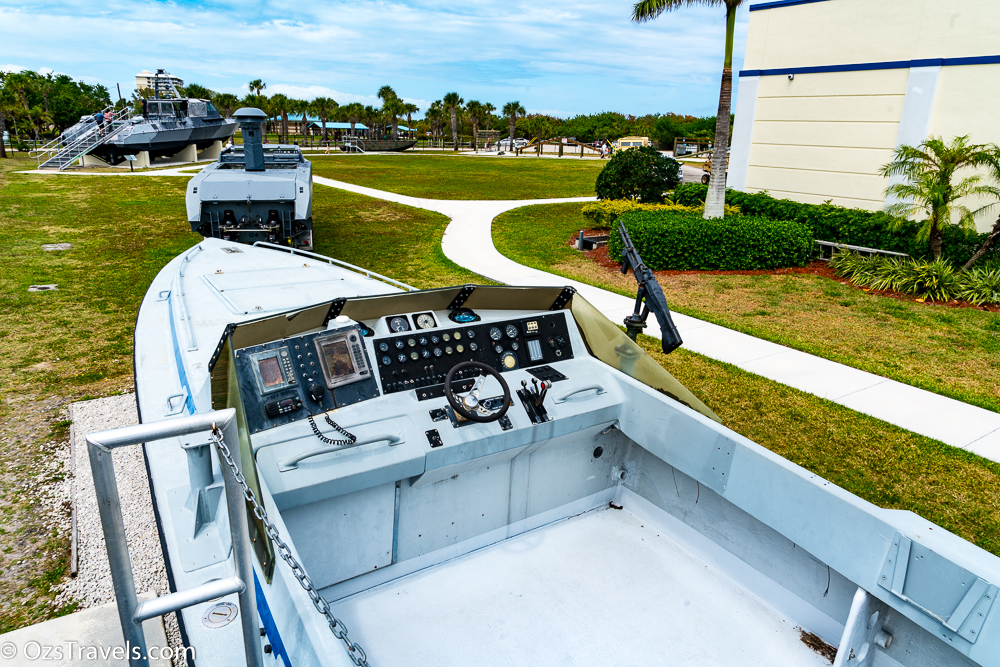
Sometime after the Gulf war, this boat was decommissioned and sent to the Patuxent River Naval Air Station to be used as a test platform and ultimately destroyed. A retired SEAL and a member of the original boat crew of this boat and veteran of the amphibious deception operation mentioned above, found the boat in a state of complete disrepair in 2000. Retired SEALs and members of the CARDEROCK Combatant Craft Division were instrumental in getting the boat reactivated and assigned to the Naval Historical Center and eventually to this Museum. The President of United States Marine Incorporated (USMI), fully funded the restoration of this boat and the shipment to the Museum to honor the late Tom Drefus, founder of USMI. The Museum is extremely grateful to USMI for the tireless efforts to restore this boat and get it to the Museum.
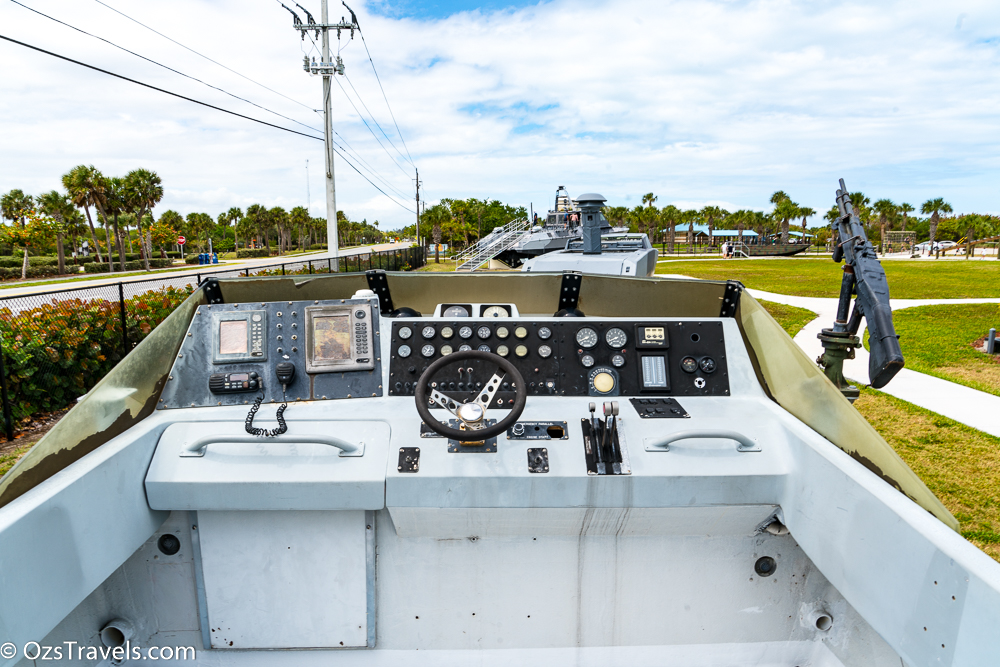
Mk V
Special Operations Craft (SOF)
The MK V is a medium range SOF Assault Craft. Operated by Special Warfare Combatant-craft Crewmen (SWCC) the MK V primarily supports Navy SEALs. The Mk V carries five crew and sixteen fully equipped SEALs. The ride on seats designed for maximum comfort and shock mitigation in high seas or heavy maneuvering. The craft can carry four Combat Rubber Raiding Crafts (CRRC) with six outboard motors and fuel.
MK Vs are outfitted with four gun mounts which could be outfitted with a combination of weapons systems such as the M2 50 Cal. machine gun or M240 7.62 Cal. machine gun.
| MK V# | MVSOC963 |
| In Service | August, 1996 |
| Cost | $3.7 million per craft |
| Used by | Special Boat Team 20, Little Creek Virginia |
| Deployment AO’s | Mediterranean, Southcom, Cintcom, Eucom, Pacom, Visited more than 25 countries |
| Campaigns | Global War on Terror 2001 – 2012, Operation Iraqi Freedom 2003 |
| Weight | 52+ tons |
| Length | 82 ft. |
| Width | 15.5 ft. |
| Height | 17.5 ft. from the waterline
22.5 ft. from Keel |
| Draft | 5 ft. Static 4 ft. on step |
| Engine | 2 x 2252 HP MTU 12V396 TE94 Engines |
| Water Jets | 2 x Kamewa 50SII |
| Payload Capacity | 6,500 lbs.+ |
| Fuel capacity | 2,525 gallons |
| Cost to operate | $4,500 an hour |
| Operational range | 500+ nautical miles, can be refuelled at sea if necessary |
| Speed | 50+ knots from factory, 40+ knots outfitted for SEAL operations due to added weigh |
SOC-R
Special Operations Craft-Riverine
The mission of the SOC-R craft is to perform Short Range Insertion and Extraction of Special Operations Forces (SEALs primarily) in a riverine environment. The boat and crew can also conduct direct action missions. The craft is transportable by US Air Force cargo aircraft and medium-lift helicopters such as the H-47 Chinook and H-53 Sea Stallion. This allows quick deployment of US Special Operations riverine forces.
The SOC-R is 33 feet long, with a nine-foot beam, and draws only 8 inches (2032 cm) of water at speed. Twin 440 HP YANMAR diesel engines give it quick acceleration up to its rated top speed of 42 Knots (about 48 MPH or 78 KPH). The aluminium hull makes it light and strong and capable of carrying up to 20,500 lbs (9,300 KG) in personnel and combat gear. Two Hamilton waterjets make it extremely maneueverable. It has a crew of five and can carry up to eight passengers.
The hull of the Special Operations Craft Riverine can accommodate some ballistic armor for protection and has mounts for five weapons (In addition to those carried by the crew and passengers). These include the M2 .50 calibre heavy machine gun, MK 19 automatic grenade launcher, and 7.62 mm miniguns. SOC-Rs are operated by Special Warfare Combatant-Craft Crewmen (SWCC).
This craft, SOC-R 11, was refurbished by United States Marine, Inc (USMI) for the Museum. SOC-R 11 served on the Tigris River of Iraq from June 2007 to February 2008 and was operated by Special Boat Team 22 from Stennis, Mississippi. This might craft conducted over 192 missions during 1050 hours underway and logged more than 3400 nautical miles in enemy waters.
Built by United States Marine, Inc. (USMI)
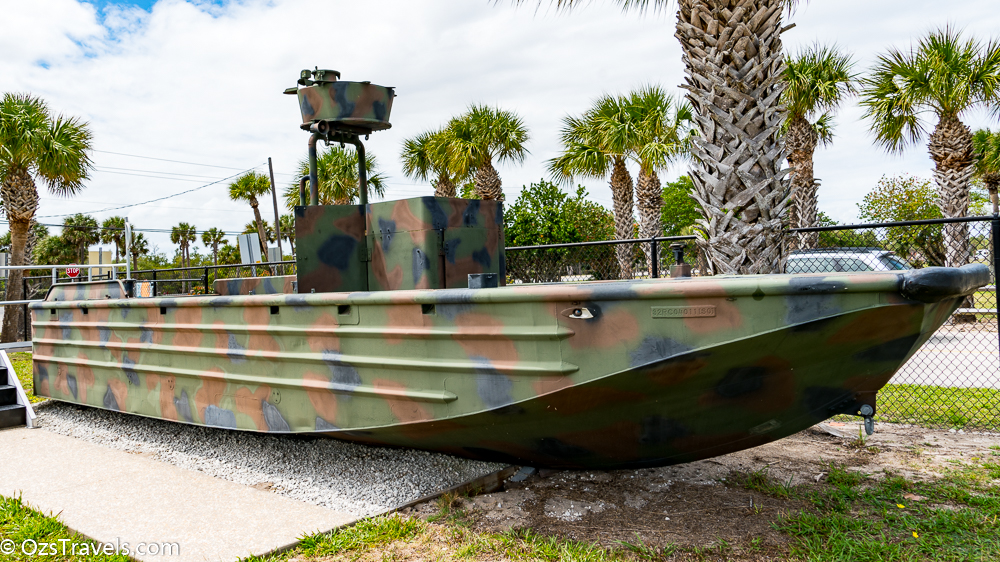
Random Photos
Custom Bike
This custom made motorcycle was built by a Navy SEAL as a tribute to the eleven Navy SEALs and eight Army Night Stalkers who were killed in Afghanistan in Jun 2005 during Operation Redwings.
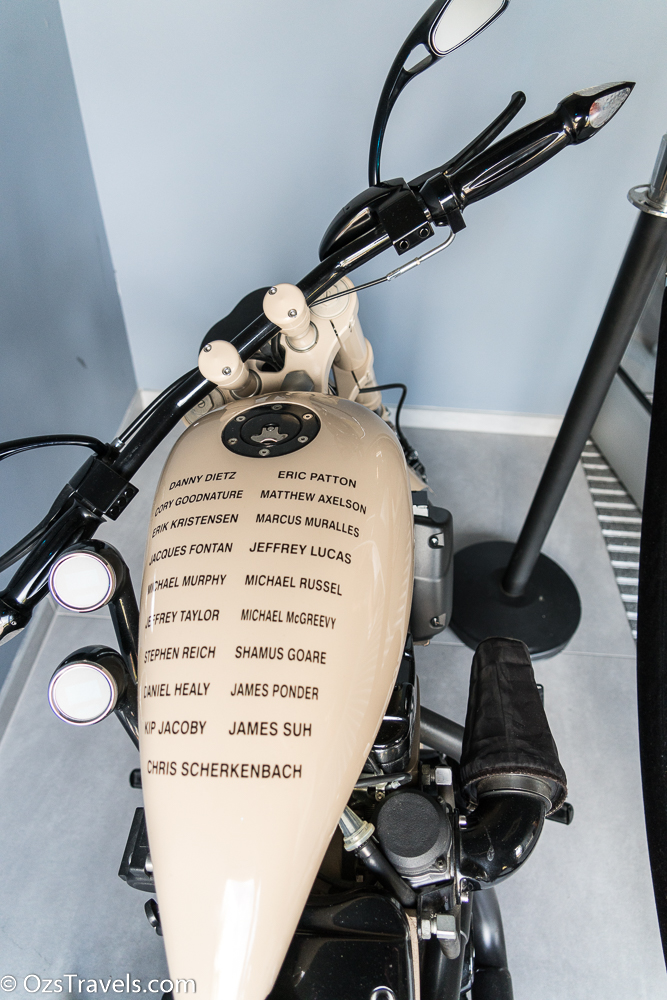
On June 28, 2005, three of four SEALS on the ground (Murphy, Dietz, Axelson) were killed during combat operations in support of Operation Red Wings. On the same day, a Quick Reaction Force (QRF) of eight Navy SEALs and eight Army Night Stalkers were also killed when the MH-47 helicopter that they were aboard was shot down by enemy fire in the vicinity of Asadabad, Afghanistan in the Kumar Province.
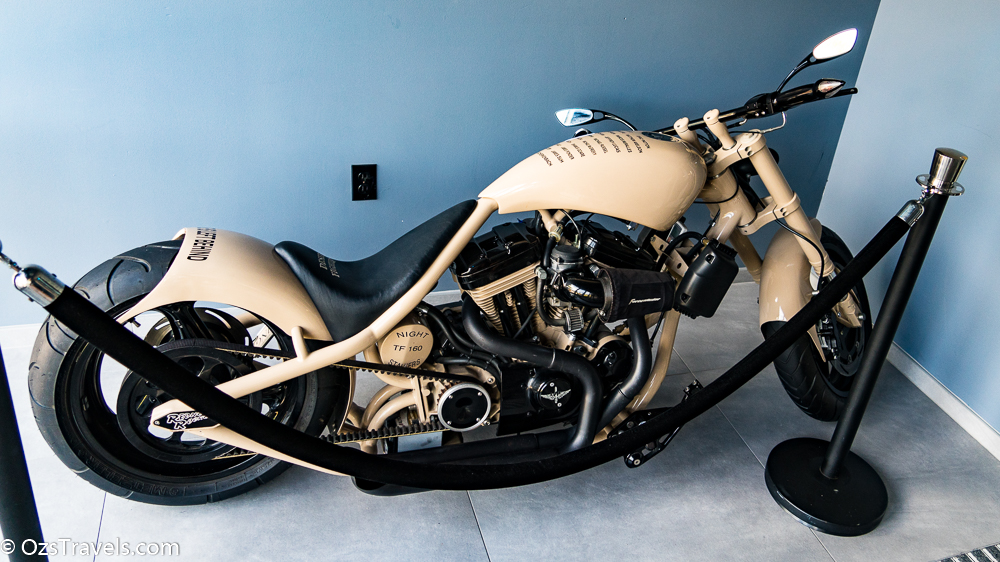
SENTRY HP UAV/DRONE
The SENTRY High Performance Unmanned Aerial Vehicle (UAV) was designed and built for use in support of the Navy SEAs. Its mission is tactical-level reconnaissance, surveillance, target acquisition and battlefield damage assessment. SEALs depend on small UAVs such as the SENTRY to locate High Value Targets (HVT) that would otherwise escape detection due to the shortage of larger more capable UAVs such as the Predator and Reaper drones. The SENTRY is gas powered, weighs 325 lbs. fully loaded and can fly at altitudes up to 10,000 feet at 75 knots for up to 5 hours. Its payload consists of both day and night cameras and special sensors that collect radio and cell phone signals.
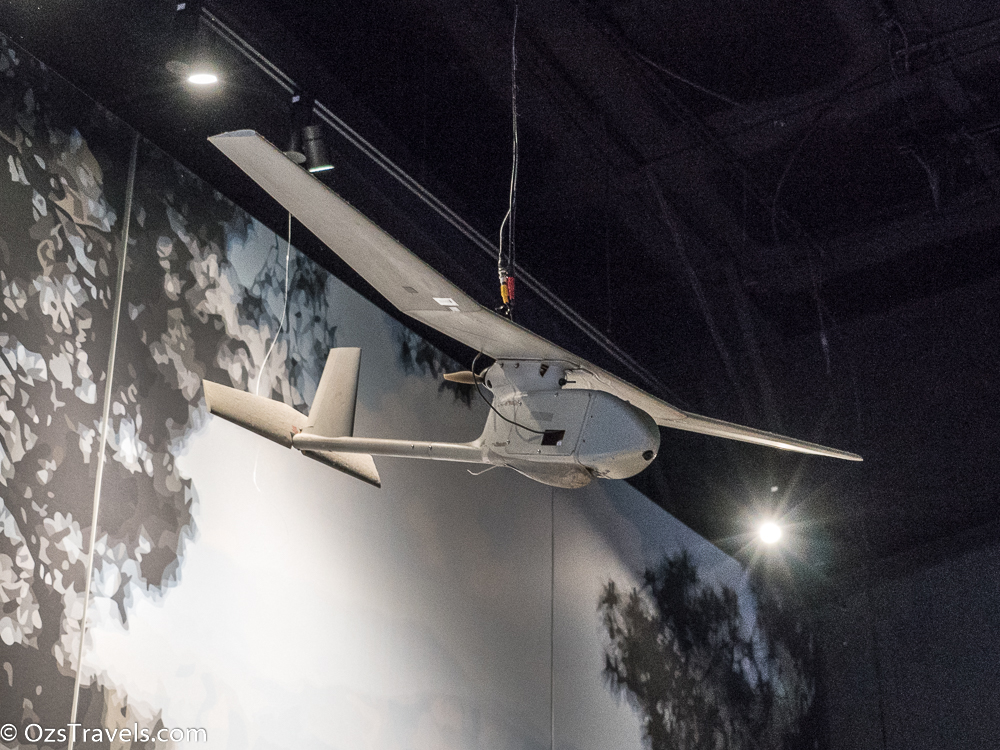
Maersk Alabama
On 8 Apr 2009 the Maersk Alabama under the command of Captain Richard Philips was hijacked after stopping in Djibouti en-route t
o Mombasa Kenya. The hijackers were 4 Somali Pirates aged between 17 and 19. The crew of Maersk Alabama were unable to keep the hijackers off the ship, they even captured the ringleader and tried to trade him for Captain Philips who the hijackers had captured, but the pirates, surprisingly, did not honour their side of the bargain and refused to release the Captain once their leader had been freed.
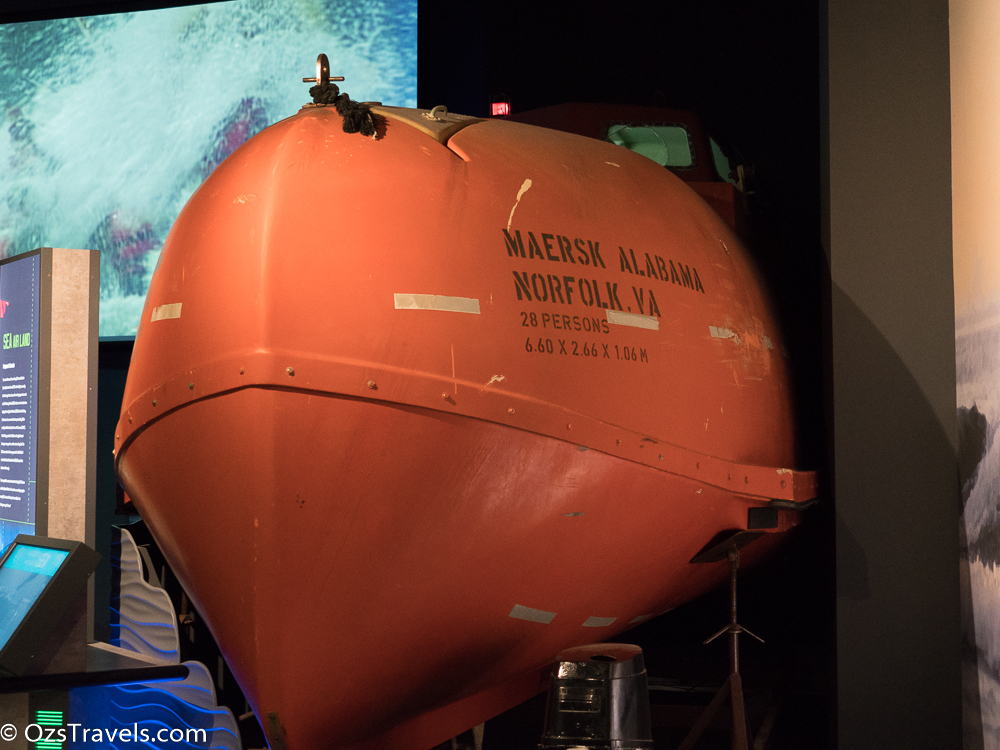
The crew of the Maersk Alabama were able to disable the ship which forced the 3 hijackers who boarded the ship to abandon it taking Captain Philips with them aboard one of the ship’s lifeboat as their hostage. This is where the US Navy and the SEALs come in. The US Navy first attempted to negotiate with the hijackers, but to no avail, leaving them not many options when comes to rescuing Captain Philips.
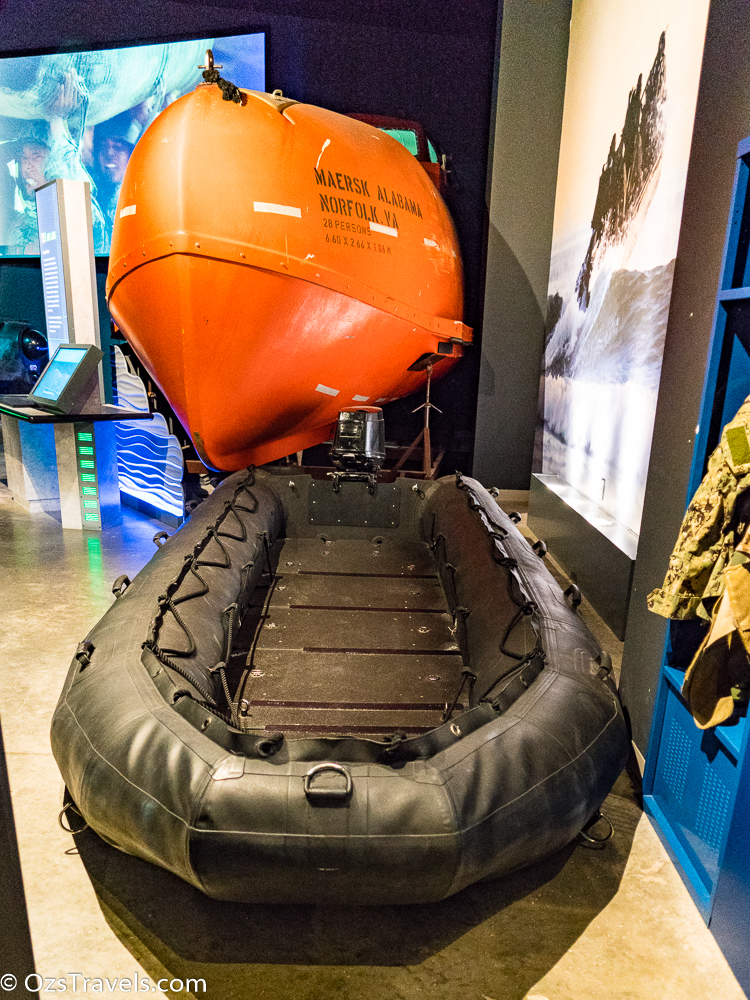
SEALs marksmen were given the responsibility of taking out the 3 hijackers, which they successfully did on 12 Apr 2009. Sounds like a good idea for a movie.
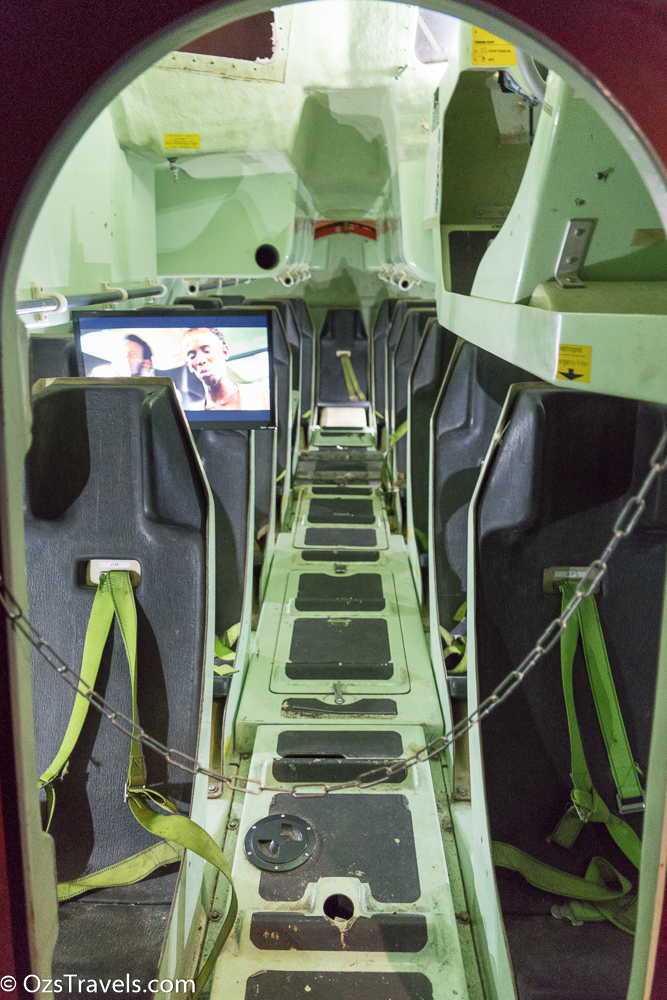
This is the lifeboat, checkout how “small” the thing is. Taking out the hijackers using sniper rifles perched on the rolling deck of a ship at sea, compensating for the roll of the lifeboat as well, is amazing. Proves the skill of the SEALs.
The Trident
The Anchor symbolizes the Navy, the parent service, the premier force for power projection on the planet and the guarantor of world peace. However, it is an old anchor that reminds the SEAL’s that their roots lie in the valiant accomplishments of the Navy Combat Demolition Units and Underwater Demolition Teams – honoured here at Force Pierce at the National Navy UDT-SEAL Museum – that’s where it all started.
The Trident, the sceptre of Neptune, or Poseidon, king of the oceans, symboliszes the SEAL’s connection to the sea. The ocean is the hardest element for any warrior to operate in – it is the one in which SEALs find themselves the most comfortable.
The Pistol (Flintlock) represents the SEAL’s capabilities on land – whether direct action or special reconnaissance. If you look closely, you’ll see it is cocked and ready to fire and should serve as a constant reminder that SEALs must be ready at all times.
The Eagle, the nation’s emblem of freedom, symbolizes the SEAL’s ability to swiftly insert from the air. Normally, the eagle is placed on military decorations with its head high. On the SEAL insignia, the eagle’s head is lowered to remind each of us that humility is the true measure of a warrior’s strength.
SEAL is an acronym for Sea – Air – Land.
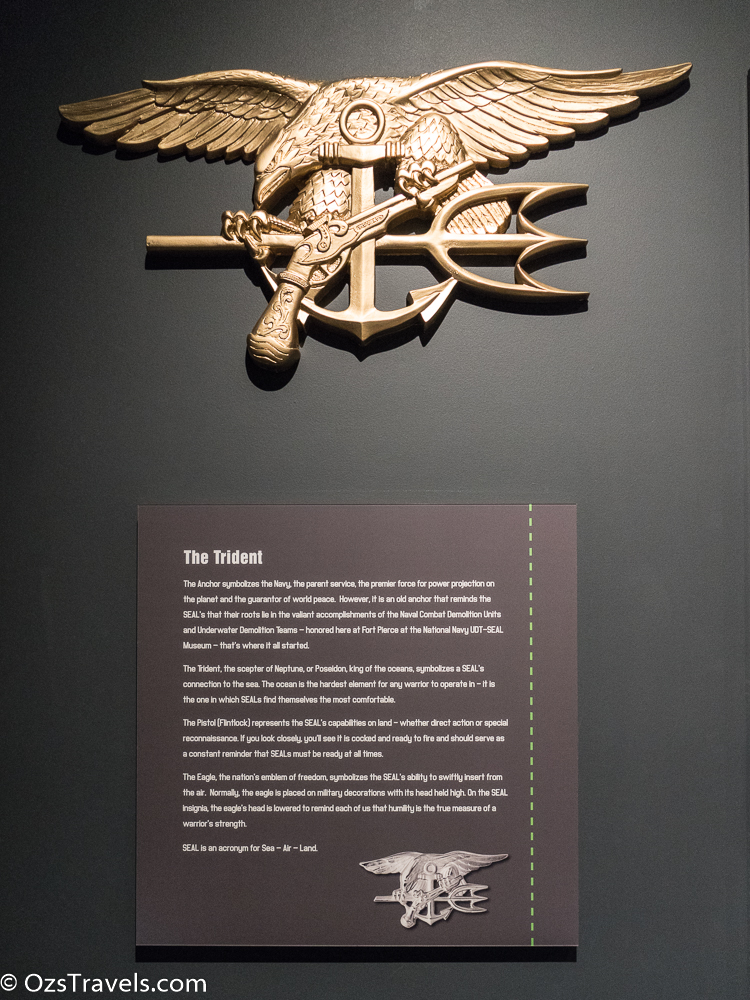
Sea Air Land
Random Photos
Naked Warrior Statue
The Naked Warrior statue depicts the elite men of the U.S. Navy’s Underwater Demolition Teams (UDT) of World War II. Nicknamed “Naked Warrior” for their lack of clothing and equipment, these men were supplied with only shorts, swim fins, dive mask, a knife, a pencil, and a slate board on which to record their findings. These brave men entered enemy waters to recon enemy-held beaches and destroy any natural or manmade obstacles that could impede allied amphibious landings.
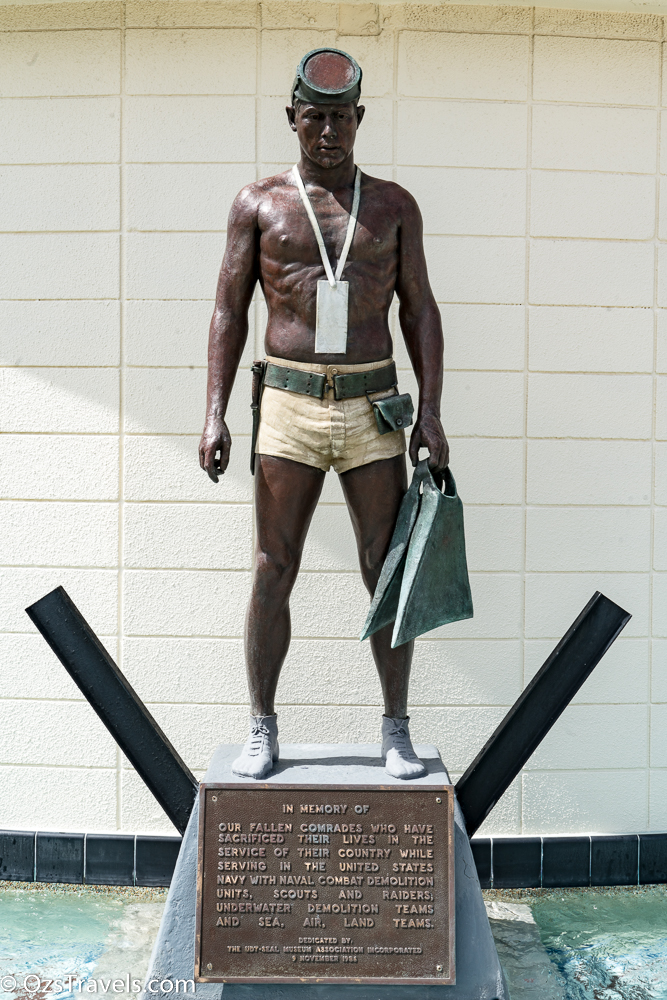
The National Navy UDT-SEAL Museum
The UDT-SEAL Museum is a great place to learn about the history of this amazing unit and their campaigns. I was glad to be able to visit the place with my friend Dave, the long haired lout in one of the photos. When I am back in the area again, will return as I am sure I will always find something new to see.
